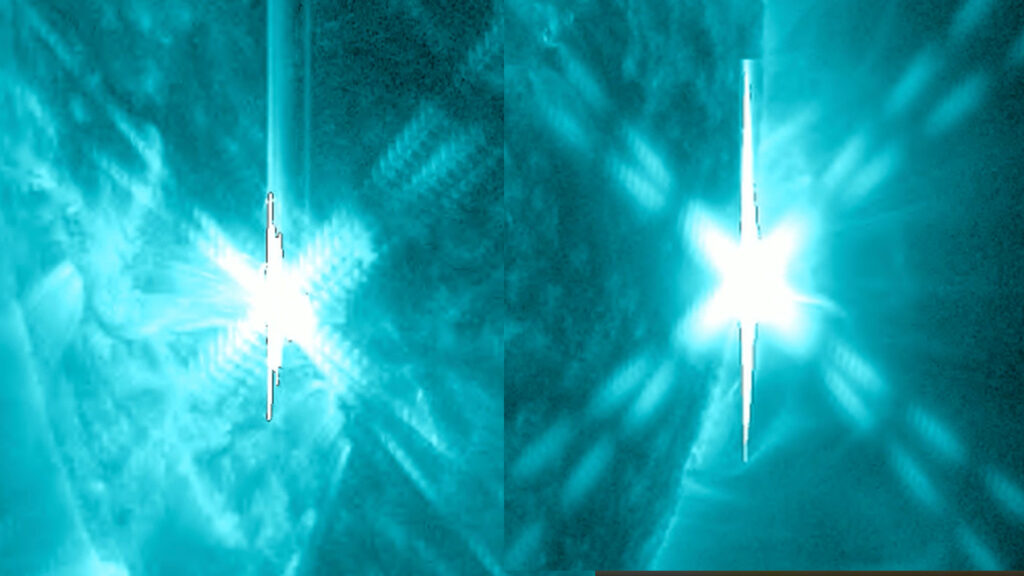Twin X-Class Solar Flares: A Spectacular Show and Its Earthly Implications
The sun recently put on an incredible display, unleashing not one but two powerful X-class solar flares within a span of just a few hours. These solar flares, which are the most intense class of flares, have sparked excitement among scientists and skywatchers alike due to their potential to enhance the Northern Lights this week. But what exactly are these solar flares, and why do they matter so much? Let’s dive into the details and understand the significance of this solar activity.
On August 5, 2024, the sun emitted two X-class solar flares in rapid succession. The first flare, categorized as X1.7, erupted from sunspot AR3767 around 9:40 a.m. EDT. This was followed less than two hours later by an X1.1 flare from sunspot AR3780, peaking at 11:27 a.m.

Solar flares are intense bursts of electromagnetic radiation caused by the release of magnetic energy associated with sunspots. The energy travels at the speed of light, impacting Earth almost immediately upon detection. The classification of flares ranges from A (weakest) to X (strongest), with each class further divided into a scale from 1 to 9.
This immediate impact means that any effects from these flares, such as disruptions in radio communication and GPS signals, would have already been felt by the time scientists observed them.
Solar flares often lead to coronal mass ejections (CMEs), which can have significant impacts on Earth. CMEs are massive bursts of solar wind and magnetic fields rising above the solar corona or being released into space. Unlike the electromagnetic radiation of flares, CMEs consist of actual matter, which takes a few days to travel from the sun to Earth. The recent flares have scientists on alert for potential CMEs that could enhance geomagnetic storms which, in turn, can amplify the auroras, making the Northern Lights visible much further south than usual. However, only the second flare’s CME has the potential to impact Earth, as the first flare’s CME was not oriented towards our planet.
Equipped with advanced instruments, SDO captures high-resolution images of the sun, helping scientists study solar flares, CMEs, and the sun’s magnetic field. The recent twin X-class flares underscore the dynamic nature of the sun and the importance of solar research in anticipating and managing space weather. As we approach the solar maximum, the peak period of the sun’s 11-year activity cycle, the frequency and intensity of such flares are expected to increase, making continuous observation and research even more critical.



















